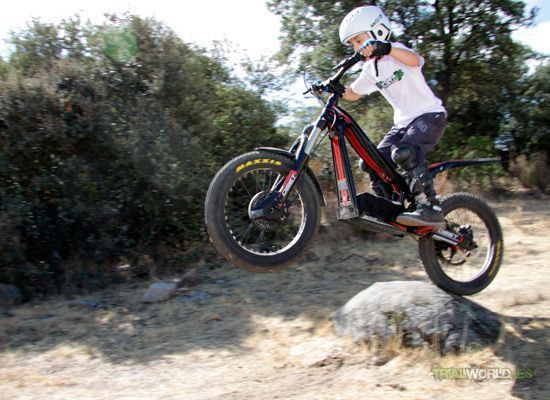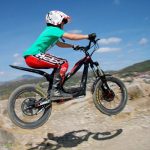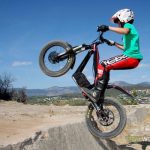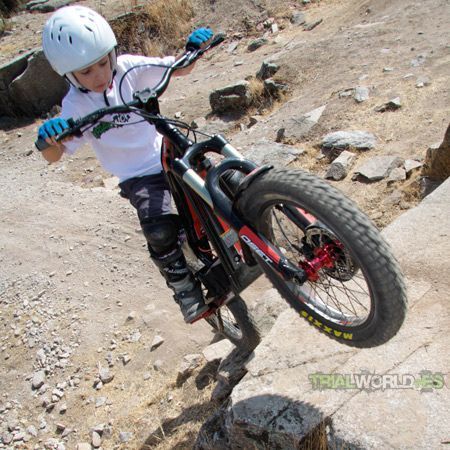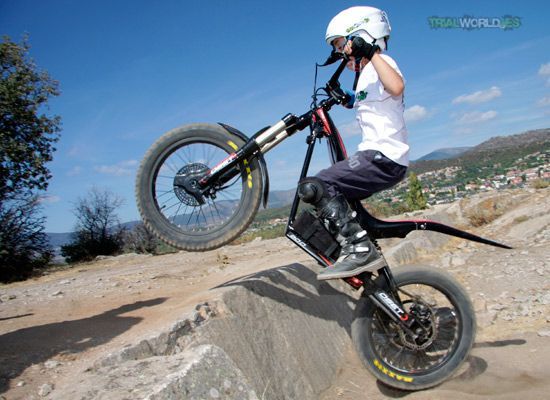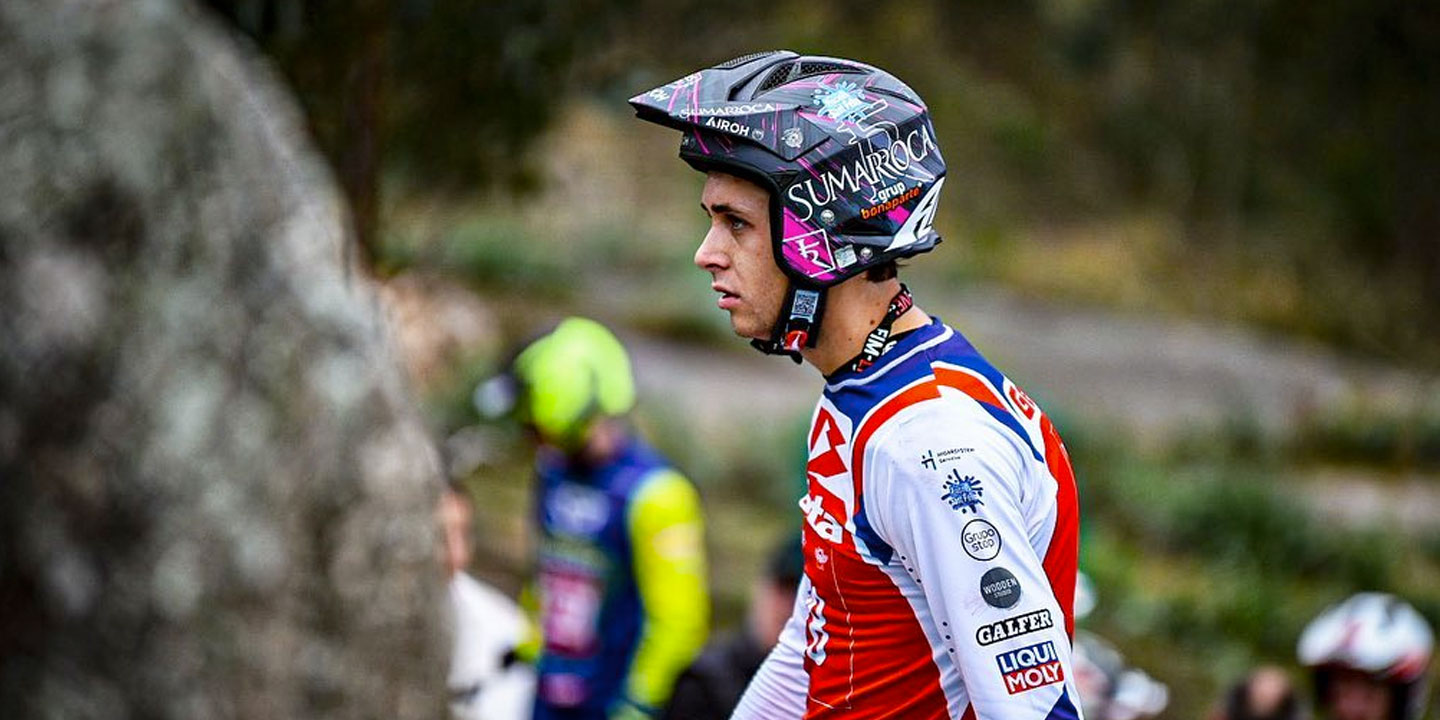The alternative of electric motorcycles in the context of a discipline as demanding as Trial is becoming more and more forceful. While penetration in the XL models is being timid, mainly due to the technical demands and skills required, in the segment of children’s models – those focused on pilots up to 7 or 8 years old – it is practically “electric” preserve.
Since 2004, when Oset began working on a prototype of a children’s electric motorcycle, today there are multiple brands that have bet heavily on this market, such as Mecatecno, Gas Gas, Xispa and soon Alfer.
The main advantages of electric motorcycles to get started in the world of two wheels are multiple. The first is its lightness; Thanks to its lower weight, riders can manoeuvre better, lift the bike on their own and prevent it from easily falling when leaning. Second, the response of the engine; In addition to being able to easily dose the potency, the delivery is progressive and easy to dose. Something that we have also found in our Trial School, especially among the little ones, is that the fact of not making noise allows them to be more focused on the two great pillars of learning: controls and balance.
3 years ago in Oset they started working on a 20-inch model, in order to offer an “electric” alternative to pilots who were already too small for the 16-inch. The fruit of this work was revealed at the beginning of the year and the result is the protagonist of this test.
Oset has made a strong commitment to a complex age segment. It is necessary to satisfy the rider who is taking his first steps in the world of two wheels and the premature ones who are already looking to climb their first obstacles.
Therefore, growing in size not only meant a taller chassis, but also a new configuration of the entire chassis and greater performance. Let’s review the most important elements before we get into sensations:
OSET 20.0 ELECTRIC MOTOR
It develops a power of 1200w 48v, modulable through a 100 Amp controller – in the 12-0 and 16.0 models this controller is 40 Amp – which can be adjusted through a device located behind a rubber molding in the place that would correspond to the fuel tank. Simply press a button and turn a dial to get more or less power easily.
The standard batteries are from the Rita Power brand and meet the 48v 10ag AGM SLA specification. The weight of the Oset 20.0 with batteries is 33.8 kilos, while without them the scale is only 22.2 kilos.
Here he explains that usually the duration is about five years, but with a type of flotation use (very shallow loading and unloading). They do not provide information about the expected life time depending on the discharge, basically because they are designed to work in flotation.
An equivalent of the EV series would be this one.
In this case, they advertise a durability of approximately 300 cycles with 100% discharges.
OSET 20.0 SUSPENSIONS
The suspensions of both trains are at a high level. At the front we find an adjustable fork in rebound and 100mm of travel that offers excellent rigidity to the front end.
OSET 20.O BRAKES
The 20.0 relies on hydraulic disc brakes – in the 16.0 they are mechanical – on both axles. They are well protected, especially the front, and the efficiency of the whole is optimal. The most interesting thing is that the rider doesn’t need to make as much leverage on the lever to get the most out of the brakes.
OTHER COMPONENTS
Other good quality details on the 20.0 are the hubs with sealed bearings, the generously sized footpegs offer good grip and can be anchored in two different positions.
In addition to this, Oset is considering offering a rear wheel alternative, perhaps with more width, tube brake or even tubeless. Any of these alternatives would be very interesting to consider.
The price of the Oset 20.0 will be around 2,500 euros.
AT THE CONTROLS
To carry out this test we have 3 students from our Trialworld School. They, along with their parents, are in charge of explaining their feelings at the controls of the electric 20.0. To do this, we marked some areas for them and they tackled it alternating their usual bike with the test Oset, in order to draw more precise conclusions.
The 3 cater to very different profiles.
Marcos has just turned 7 years old and is a user of the electric Oset 16.0. Maria is 11 years old and has just swapped her automatic Clipic for a Gas Gas 80. Pablo is also 11 years old and has been on a Beta 80 for over a year.
Maria is a Gas Gas 80Marcos user (7 years old): “I like it better than my 16.0 mainly because of the suspensions, which allow me to climb the stones with less effort and without so much hitting. The engine runs a lot more. Today, which is the first day, it’s hard for me to get used to it, but it’s easy to drive. The brakes are very good, although they are a bit hard for me. The riding position is comfortable and in turns it is easier to get your balance. I’d love to be able to swap mine for this one.”
Gonzalo (father of user Oset 16.0): “For Marcos, who is 7 years old, the size, the wheels and the weight of the bike seem perfect to me. The suspensions also look very good, especially considering the big jump from 16.0. The only doubt I have right now is about the battery durability, something we can only check after intensive use and studying its aging. The jump from 16.0 to 20.0 is natural, perfect for a child of approximately 7 or 8 years old to continue progressing in Trial.”
Carlos (father of two children who are just starting to ride motorcycles): “I think it’s a completely different concept than gasoline. We, who have always used petrol motorcycles, find it difficult to adapt, but they, who start from scratch, think this option is very interesting. There is no doubt that electric motorcycles are going to have a lot of traction in the future, but probably today at 8 years old I would prefer my son to continue with a gasoline motorcycle.”
Jesús (father of Gas Gas 80 user): “I am convinced that these bikes are the future. My young son will learn with an electric scooter for sure. You’ll probably learn more than with the gasoline one; Perhaps it has too many aspects to distract them from learning the basics (clutch, engine stalling, noise). With the electric one, which also has less weight, they will probably put more value on it.”
Jose Manuel (father of Beta 80 user): “Price is a very important issue. At the same price, I would consider buying an electric motorcycle. Other Autonomous Communities already have their own category of electricity companies, so it is very likely that the future will be in this direction. What I see best for Paul is lightness.”
The 3 models in the Oset range: 12″, 16″ and 20″ Maria (11 years old): “I don’t have to apply so much force for the same areas, or be so aware of the clutch. The bike is a bit small for me, but it’s a lot of fun and with less year it would have been interesting. Aesthetically I like it quite a lot, but it would take more time to get used to it.”
Pablo (11 years old): “What I like the most is how little it weighs. It’s also interesting that it doesn’t get stuck in the areas. The engine is smooth, although it requires a lot of feel to get the sections right and not to accelerate too quickly. Maybe I could do areas very similar to what I currently do with the 80. Brakes for me are weird. I’d like the butt to be on my foot to get used to it. In conclusion, I like it a lot.”
GJ (Telecommunications Engineer): “If the battery is a starter, it has a cycling problem, that is, it can’t handle being discharged a lot. By construction, they age very quickly. For this use, there are deep-discharge batteries. These batteries are made to work in floating, which is very little discharge, very little charge. If you discharge it completely, the durability is greatly reduced. This type of battery does not handle full battery discharges well. The solution is lithium batteries, but they are more expensive.
Another thing to keep in mind is that these batteries, when discharged, lose voltage. This implies that they give full power at the beginning, but when from mid-load, the drop in performance is significant. Lithium vehicles, on the other hand, have a very abrupt discharge. It gives you all the power and suddenly decays to a stop.”
Text and photos: David Quer
Collaborators: Marcos Jiménez, María García and Pablo García.
Acknowledgements: Oset Spain
